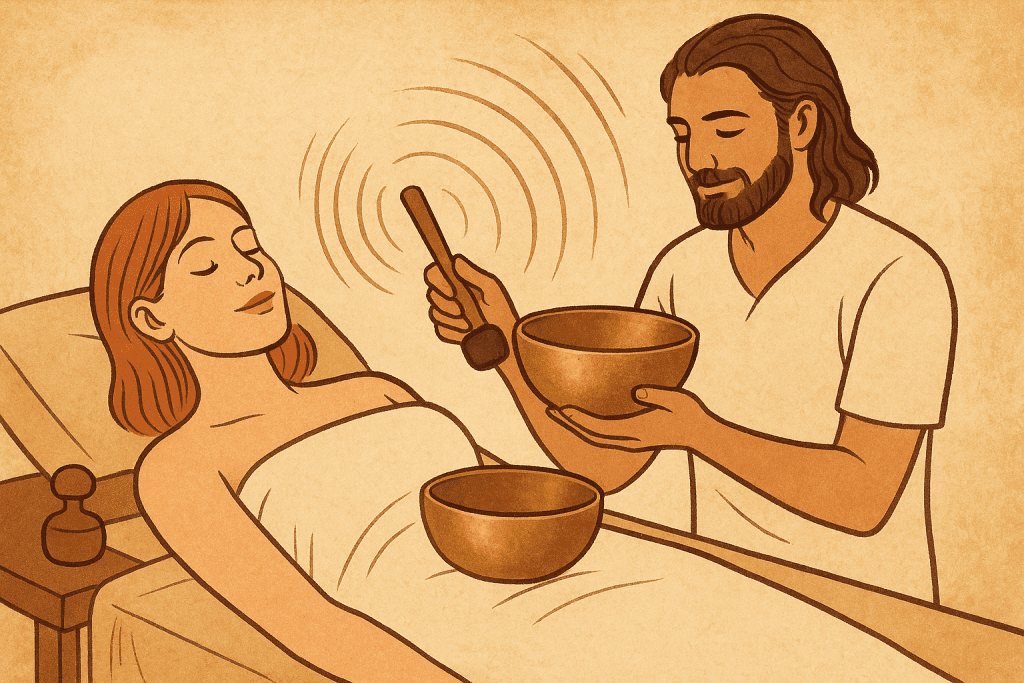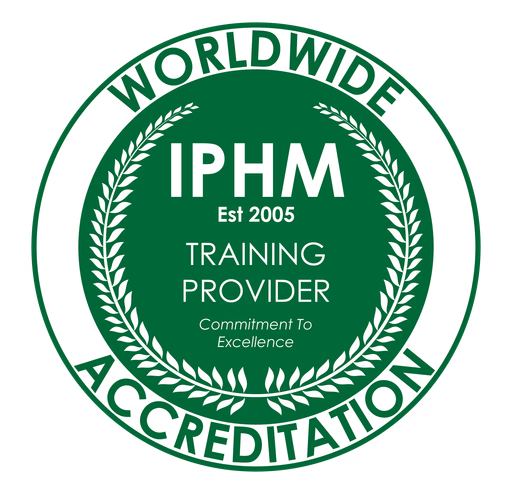
Introduction
Sound and vibration massage is gaining massive popularity in wellness circles. But one question keeps coming up: How often should you actually get it? If you’ve ever left a session floating on a cloud of calm, you know how powerful it can be. But frequency plays a big role in how effective these sessions are. Let’s break it down so you can find the right rhythm for your body and mind.
What Is a Sound and Vibration Massage?
Unlike traditional massage, which relies on physical touch, sound and vibration massage uses frequencies and resonance to work on your body. Sound and vibration massage is a form of vibrational therapy, which uses specific frequencies to influence the human body. Practitioners may use singing bowls, tuning forks, gongs, or even vibration beds that send gentle waves through your body. Instead of kneading muscles, vibration massage is a type of massage therapy that works by harmonizing the energy system of the human body.
The Science Behind Sound and Vibration Therapy
Ever noticed how your favorite song instantly changes your mood? That’s vibration at work. Sound therapy taps into the idea of resonance the way certain frequencies align with your body. These vibrations calm the nervous system, balance your brainwaves, and also have neurological effects by influencing neural responses and promoting relaxation. They even improve circulation by stimulating the formation of more capillaries, which enhances blood and oxygen delivery to your muscles. Vibration massage can also support venous return, helping blood flow back to the heart. Think of it as tuning your body like a musical instrument.
Benefits of Sound and Vibration Massage
- Stress reduction: Waves of sound lower cortisol and activate deep relaxation. Vibration massage can help decrease stress by relaxing muscles and calming the mind.
- Pain relief: Vibrations loosen tight muscles and ease chronic pain. Vibration massage can also reduce pain by targeting deep tissues.
- Relieve muscular tension and muscle cramps: Vibration massage helps relieve muscular tension and can prevent or alleviate muscle cramps by improving circulation and promoting muscle relaxation.
- Emotional balance: Many people release built-up emotions during sessions.
- Better sleep: Your body shifts into deep rest states, improving sleep cycles.
Choosing the Right Equipment
Selecting the right equipment is key to getting the most out of vibration therapy. Look for devices that operate within the therapeutic frequency range of 30-60 Hz this sweet spot is ideal for stimulating soft tissues, easing delayed onset muscle soreness, and helping with tight muscles. Not all massage devices are created equal; while massage guns are popular for targeting muscle soreness and muscular tension, they may not always deliver the consistent vibration needed for whole body vibration therapy. Consider whether you want a device for localized vibration great for specific muscle groups or a platform for whole body sessions. The right equipment should match your goals, whether you’re looking to boost blood circulation, relieve muscle soreness, or simply relax your whole body. Always check that your chosen device is designed specifically for vibration therapy to ensure you’re getting the full range of benefits.
Massage Technique
How you use vibration therapy matters just as much as the equipment itself. Massage therapists often rely on a gentle vibration technique, using an up and down movement to stimulate soft tissues and encourage blood flow. This approach helps loosen muscle fibres, reduce muscular tension, and relieve muscle pain without overwhelming the body. Combining vibration with other massage techniques, like percussion massage, can further enhance results improving range of motion and targeting stubborn muscle knots. It’s important to use the right amount of pressure: too much can cause discomfort or adverse effects, while light, controlled pressure maximizes the benefits. Whether you’re using a device at home or working with a professional, following proper massage technique ensures you get the most from your vibration therapy sessions.
Blood Circulation and Vibration
One of the standout benefits of vibration therapy is its ability to boost blood circulation. The rhythmic vibrations increase blood flow, helping deliver oxygen and nutrients to muscles and other tissues. This enhanced circulation supports the removal of waste products and brings in new blood cells, which is especially helpful for those dealing with chronic pain, muscle soreness, or neck pain. Improved blood flow can also speed up the healing process for scar tissue and reduce discomfort in areas with poor circulation. By regularly incorporating vibration therapy, you can support your body’s natural healing processes, reduce muscle soreness, and promote overall wellbeing making it a valuable tool for anyone looking to improve their health from the inside out.
Vibration Massage and Exercise
For athletes and fitness enthusiasts, vibration massage is a game-changer. Using vibration therapy before exercise helps prepare muscles by increasing blood flow and reducing stiffness, making it an excellent pre-event strategy. After a workout, vibration therapy aids in muscle recovery, easing muscle pain and soreness while improving range of motion. Many professional athletes and sports physiotherapists recommend vibration therapy as part of a comprehensive training and recovery plan. By integrating vibration massage into your exercise routine, you can experience the many benefits of vibration therapy enhanced performance, reduced risk of injury, and faster recovery. Whether you’re aiming to boost your range or simply reduce post-workout pain, vibration therapy is a powerful addition to any fitness regimen.
Factors That Determine Frequency
There’s no one-size-fits-all. Your needs will shape how often you should go. Someone healing from trauma might benefit from weekly sessions, while someone just curious about relaxation might only need one per month. Lifestyle, health goals, and stress levels matter. For example, if your health goals include improving blood pressure, regular vibration massage sessions may help support this outcome.
Additionally, the clinical application of vibration massage such as for pain relief, tissue extensibility, or muscle strength may require more frequent sessions to achieve specific therapeutic benefits.
General Guidelines for Frequency
- Weekly: Perfect for those under high stress or going through healing.
- Biweekly: A great balance for maintenance.
- Monthly: Works well for general relaxation.
- Occasional: Use it as a reset button when life gets overwhelming.
When to Get Sessions More Frequently
Sometimes life throws curveballs. If you’re an athlete or someone looking to enhance performance, more frequent vibration massage sessions may also be beneficial. If you’re facing intense stress, recovering from injury, or dealing with emotional challenges, more regular sessions can help you process and heal. It’s like going to the gym you’ll see progress faster with consistency.
When Less Is More
Too much can overwhelm sensitive people. Some need time to integrate after a strong session, especially if deep emotional release happens. Listening to your body is key if you feel drained instead of refreshed, it may be time to space out sessions.
Signs You May Need More Sessions
- Can’t fall asleep easily
- Tension that doesn’t go away
- Feeling stuck emotionally
- Constant fatigue or energy blocks
Combining With Other Therapies
Sound massage shines when paired with other healing practices. Combining vibration massage with other therapies can help address trigger points, which are tender muscle areas that cause pain and discomfort. Yoga prepares the body, meditation deepens the effects, and traditional massage works hand in hand with vibration therapy. Tools like a massage gun can also be used alongside vibration therapy for targeted relief. Many also combine it with Reiki, acupuncture, or breathwork for a holistic routine.
Potential Risks and Precautions
While safe for most, there are exceptions. People with pacemakers should avoid strong vibrations. Pregnant women should consult their doctor. And if you’re prone to migraines or have extreme sound sensitivity, sessions may need to be modified.
Overuse of massage guns on large muscle groups, such as the thigh muscles, can lead to serious injury, including severe muscle damage or rhabdomyolysis.
Cost and Accessibility
A private session can range from $50 to $150, depending on the practitioner. Vibrating massagers and vibrating platforms are available at a range of price points, making vibration massage accessible for different budgets. But you don’t always need to spend big group sound baths are affordable, and you can even practice at home with a simple singing bowl or vibration speaker.
Creating a Personal Routine
Keep a journal after your sessions. Note how you feel mentally, physically, and emotionally. Some people may benefit from gentle pressure during vibration massage, while others may prefer more pressure, depending on their comfort and goals. Over time, you’ll spot patterns whether you need weekly resets or just a monthly recharge. Think of it as fine-tuning your personal wellness playlist.
Future of Sound and Vibration Massage
The future of sound and vibration massage is bright, with new innovations on the horizon. Advances in technology are bringing more effective and user-friendly devices to the market, from massage guns to vibrating platforms that make vibration therapy accessible at home or in the clinic. Researchers are also exploring the use of sound waves to stimulate soft tissues, opening up new possibilities for targeted therapy. As our understanding of the physiological effects of vibration therapy deepens, we’re likely to see it combined with other treatments like physical therapy or chiropractic care for even greater benefits. With its many benefits and growing body of research, vibration therapy is set to become an essential part of holistic health and wellness routines, helping more people harness the power of vibration for a healthier body and mind.
Conclusion
There’s no magic number when it comes to sound and vibration massage. It’s about syncing with your body’s needs. Weekly, biweekly, or monthly the key is to notice how you feel and adjust accordingly. Like music, it’s deeply personal.
FAQs
Yes! Tools like singing bowls or tuning forks can give you a mini-session whenever you need it. Localised vibration can also be applied at home using vibrating massagers or platforms to target specific areas of pain or stiffness. Devices like sands wa are used in vibration therapy for rehabilitation and are available for home use.
Most sessions last between 45–90 minutes, depending on the practitioner. Vibration massage can also help improve range of motion, especially when used regularly.
Gentle sessions can be safe for kids, but always check with a certified practitioner.
Sound baths are immersive group experiences, while vibration massage is more direct and body-focused. Both can affect the body in the same way as other muscle therapies by promoting relaxation and recovery, but they use different mechanisms to achieve these effects.
No, it’s complementary. Always use it alongside, not instead of, professional medical care. While vibration massage is used in sports med and sports phys ther settings for rehabilitation and recovery, it should not replace medical care.




